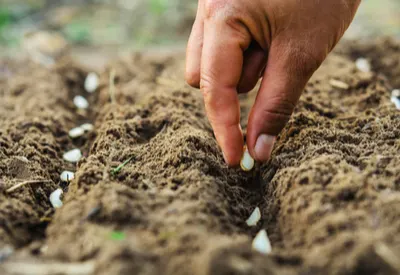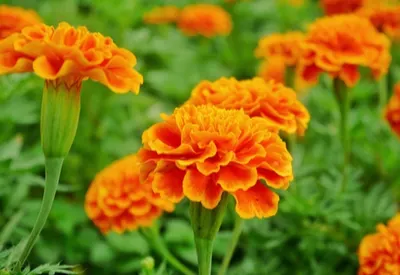If you have been around gardening or gardeners long enough, chances are, you have heard a good share of old-time garden myths and legends.
Gardeners have been passing down tips, tricks and knowledge for years. Some of that advice is solidly rooted in science and actually works. While others might be a little more along the “tall tale” lines.
Either way, they are certainly entertaining at the least. So today, as Spring approaches, we thought we would take a look at some of our favorite all time garden myths. Are they true? Are they false? Well, we will give our take on that below. But as we all know, it all comes down to what Grandpa or Grandma might have said – and who can really argue with that.
If you can, let us know any of your well-known old-time legends or myths in the comments section at the end of the article. We love hearing and sharing them with our readers.

5 Great Garden Myths and Legends
Planting By The Moonlight and Moon Phases
This one is probably the most well-known of all, especially with many old-time farmers. As it goes, you should plant annual vegetables and flowers that grow above the ground on the days between the new moon and the full moon.

As for root vegetables and perennial flowers, they should be planted during the dark of night, between the full moon and the new moon. Is it true? With this one, you will find just as many people on both sides of the fence. I know this, we have never planted by the moonlight, mainly because we are too tired to get up! And somehow, our garden still produces. 🙂 See : How We Garden With Raised Rows
Adding Sugar To The Soil Around Tomatoes Makes Tomatoes Sweeter.
This is one of our favorites! As the legend goes, if you add a few tablespoons of sugar into the soil around tomato plants, the harvested tomatoes will be sweeter. Unfortunately, this old legend is simply not true. Tomatoes absorb sugars through photosynthesis, not the soil. Although, I guess if you add a little to them once you slice them – it works!
Plant Potatoes On Good Friday
Do a little research and you will find this garden myth everywhere! As the legend goes, always plant your potato crop on Good Friday, and the crop will produce. Many say the roots (pun intended) of this practice come from Ireland. Back in the day, when the potato famine was in full force, folks looked for help from above for their potato harvest.
There are some facets of this garden myth that make sense. Potatoes do better when planted in cooler weather. And, generally, Good Friday does fall during the coolest temps of springtime. However, as the Easter calendar moves, so does Good Friday. So, in reality, it much more of a myth than a planting truth.
Always Plant Marigolds In The Garden

Many old-time gardeners swear by this one! And with good reason, it actually has a lot of merit. Many old-time vegetable gardeners still plant rows of marigolds on the outside edges of their garden. Marigolds naturally repel many garden pests and insects. They simply do not like the smell. And, to boot – they add a lot of color to your garden space!
Add Epsom Salt To The Soil To Help Tomatoes Grow
This myth has been making the rounds for years, and is one we are often asked about on the blog. Here is the low down on the myth – there is a touch of truth, but also a lot of downside to the practice.
Epsom salt contains magnesium, which is needed for good growth of tomatoes. Some soils which might lack this mineral can benefit from a bit of Epsom salt. However, adding it to your soil also adds in a lot of salts, that over time, will destroy soil structure and leave your soil in bad shape. The better alternative is to simply add compost or worm castings to the soil to add natural nutrients that will help now and in the long term! Product Link : Worm Castings – The Ultimate Fertilizer
So what are some of your favorite garden myths and legends? Let us know and share in the comment section below. Happy Gardening! – Jim and Mary.
